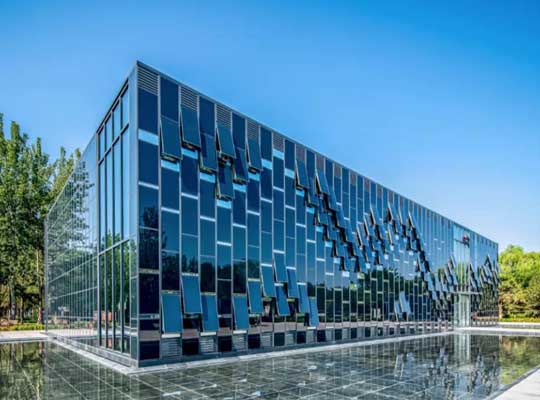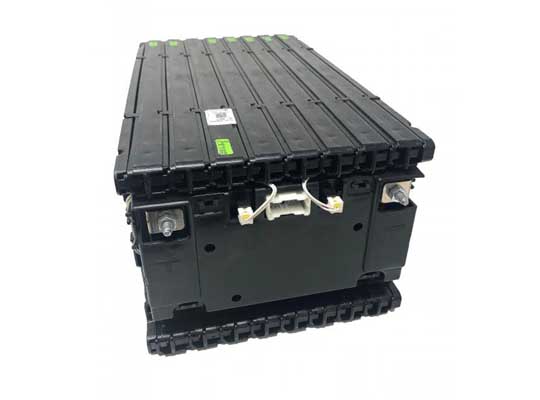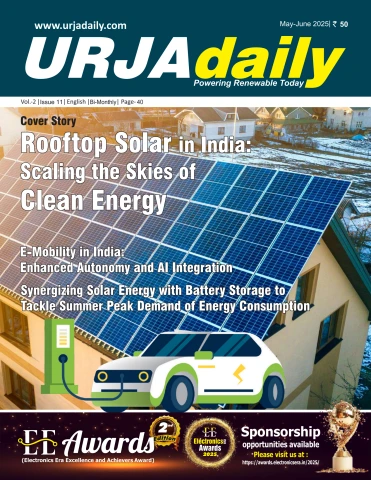CHICAGO, In-depth analysis and data-driven insights on the impact of COVID-19 included in this global building integrated photovoltaics (BIPV) market report.
The building integrated photovoltaics (BIPV) market is expected to grow at a CAGR of over 16% during the period 2020−2026.
Key Highlights Offered in the Report:
- The global BIPV market is expected to grow 2.45 times, supported by renewable polices, PV technology investments, and zero energy buildings during the forecast period.
- By technology, the thin film segment is expected to account for around 29% of the total market share by 2026, owing to the flexible nature and complex end use requirements.
- Façade and window segment is expected to grow over 18% in application, especially in the commercial segment with advancements in thin-film and colored BIPV cell technologies.
- Commercial segment emerged as the dominant end-user segment in 2020 where the expected incremental growth is over USD 3.60 billion during the forecast period.
- Europe was the largest market with a share of over 42% in 2020, which was led by Italy, France, and Germany and strong growth is expected in Nordic regions.
- Led by China, the APAC region is considered to be the fastest growing market with a CAGR of over 20% with rise in government initiatives and boom in green buildings.
Key Offerings:
- Market Size & Forecast by Revenue | 2020−2026
- Market Dynamics – Leading trends, growth drivers, restraints, and investment opportunities
- Market Segmentation – A detailed analysis by technology, application, end-users, and geography
- Competitive Landscape – 5 key vendors and 23 other vendors
Building Integrated Photovoltaics (BIPV) Market – Segmentation
- Crystalline silicon BIPV products dominated the building integrated photovoltaics market share of over 73% in 2020. Monocrystalline and polycrystalline modules witnessed high application in roofs. However, the growth in thin-film technologies is expected to capture a major share of first-generation silicon cells during the forecast period.
- In 2020, BIPV roof products dominated the market with a share of over 63% due to innovations in crystalline technology. The customized portfolio for shingles and flexible thin-film foils is accelerating the demand for residential rooftops. Transparent solar modules could be the next major opportunity in the market.
- With the implementation of solar power panels in building codes becoming compulsory, commercial buildings are expected to integrate PV systems in the building envelope. The adoption of BIPV products in commercial buildings offers dual benefits – acting as a structurally sound outer layer of the building and reducing power expenses to generate electricity for self-consumption.
Building Integrated Photovoltaics (BIPV) Market by Technology
- Thin-Films
- Crystalline Silicon
- Others
Building Integrated Photovoltaics (BIPV) Market by Application
- Roof
- Façades and Windows
Building Integrated Photovoltaics (BIPV) Market by End-user
- Commercial
- Residential
- Others
Building Integrated Photovoltaics (BIPV) Market – Dynamics
The EU Directive on Energy Performance on Buildings (EPBD) introduced a zero energy buildings concept in order to reduce energy consumption. It involves designing energy-efficient and grid-connected buildings so that the total energy consumed on an annual basis is equal to the renewable energy generated by it. According to this concept, all new buildings, including existing ones that require a major refurbishment, will have to be net-zero energy buildings starting from the end of 2020. It signifies that buildings should have a minimal yearly energy consumption level. In order to attain this goal, the building industry must use energy efficiently and generate on-site power from renewable sources. Global warming and greenhouse gas emissions are driving countries across the world to implement various policies in order to achieve ZEB. Integration of renewable technologies such as BIPV is essential to comply with NZEB (Net Zero Energy Building) requirements. BIPV modules’ productivity and efficiency depend on reflections and shading from surrounding surfaces, as these are integrated on the roofs, windows, and façades of buildings.
Key Drivers and Trends fueling Market Growth:
- Development of Next-Gen BIPV Products
- Rising Smart Home Penetration
- Preference for Non-conventional Energy Sources
- Utilization in Sustainable Renovation Techniques
Building Integrated Photovoltaics (BIPV) Market – Geography
North America has played a pivotal role in the adoption and expansion of solar energy. Europe can be credited with the development of several technologies in the field; however, North America, being the largest economy in the world, remains the most crucial market for solar energy and integrated photovoltaics worldwide. Both the US and Canada registered strong growth in 2019. Strong economic growth, the establishment of new businesses, company expansions, and the strengthening housing sector are driving the demand for efficient energy production in the region. The demand for BIPV is mainly driven by residential roofing systems and commercial retrofit projects. The use of sustainable and greener cleaning technology has grown significantly in recent years. The steep rise in BIPV demand for commercial applications will mainly ride on the growth of industries and businesses due to mandates regarding building codes and the affinity for zero-energy and self-sustained buildings.
Building Integrated Photovoltaics (BIPV) Market by Geography
- North America – US – Canada
- Europe – UK – Germany – France – Spain – Italy
- APAC – China – Japan – South Korea – Australia
- Latin America – Brazil – Chile
- Middle East & Africa – Saudi Arabia – UAE
Major Vendors
- First Solar
- Yingli Solar
- Solar Frontier K.K
- Hanwha Solar
- Hanergy Holding Group
Other Prominent Vendors
- Solarcentury
- Sharp Corporation
- REC Solar Holdings AS
- Panasonic
- Wuxi Suntech Power Co.
- Canadian Solar
- KYOCERA Corporation
- Onyx Solar Group
- SunPower
- Jinko Solar
- Tesla
- Heliatek
- BIPVco
- Visaka Industries
- NanoPV Solar
- Tractile
- ISSOL
- ertex Solar
- Nippon Sheet Glass
- BISOL
- ViaSolis
- Topsun Energy
- Polysolar













